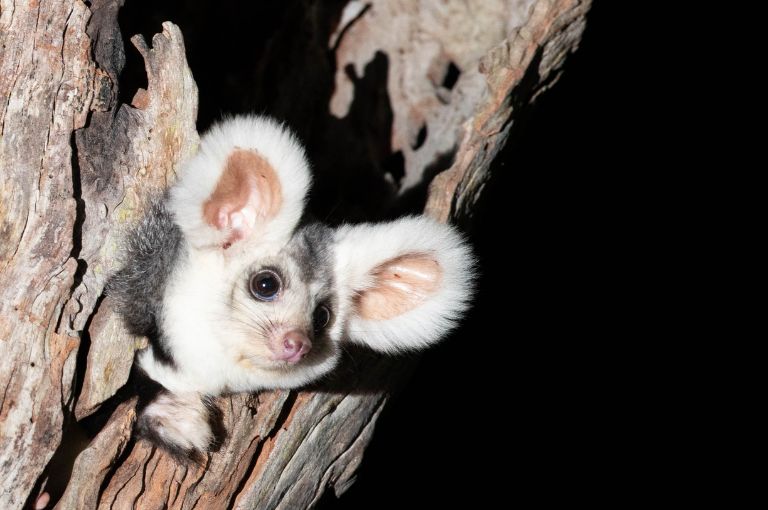
With their large fluffy ears, lush velvety fur and outrageously cute faces, you could easily mistake a greater glider for a character out of a children’s book. However, these adorable marsupials are Australia’s largest gliding mammals, found high in the canopies of eucalypt forests across our eastern states.
A membrane of thin skin between their front and hind legs, which they can fold out to serve as a ‘parachute’, gives the animals the remarkable ability to glide distances of up to 100 metres in search of food and nesting hollows. Their long, fluffy tails serve as a rudder, allowing them to change direction at a 90-degree angle whilst mid-flight.
Once thought to be a single species, DNA evidence examined in 2020 showed that they were, in fact, three separate species – the northern greater glider (vulnerable), central greater glider (endangered) and southern greater glider (endangered).
Greater gliders play a vital role as “indicator species”, providing important information about the health of our forests. Sadly, these special creatures face significant threats to their survival, including ongoing loss and fragmentation of their habitat through logging and development and the impacts of climate change, such as more frequent and intense bushfires, drought, and heat waves. Greater gliders are particularly vulnerable due to their reliance on large tree hollows to nest and shelter in, and their specialised diet comprised mainly of young eucalypt leaves, which supply most of their water needs. The animals use between 4-18 nesting hollows in their home range, with hollows large enough to house the cat-size gliders taking up to 400 years to form.
The devastating Black Summer bushfires dramatically escalated the decline of greater glider species, destroying more than 30% of the southern and central greater gliders’ habitat and wiping populations out in many forests. These threats combined have led to an overall decline in numbers across these once abundant greater glider species of a staggering 80% in just 20 years.
To curb the loss of these unique animals, GER’s Glideways program is working to protect, connect and regenerate critical eucalypt forest habitat, install nest boxes and tree-cut hollows to replace lost homes, manage major threats and engage local communities in their protection. Many of our colleagues and partners are also advocating to end the logging of the remaining native forests that are essential for the continued survival of greater gliders.
Together, we can still turn the tide for our greater gliders and ensure that our tree-top teddies survive and thrive into the future.



 Blog
Blog